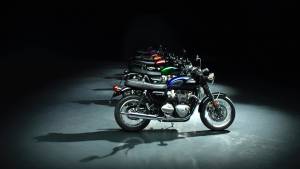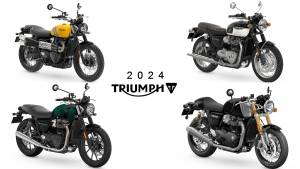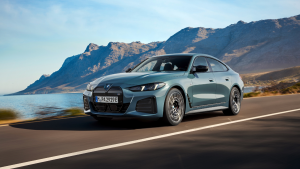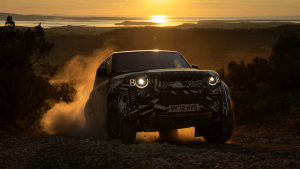What the 2016 Bonneville says about Triumph's product strategy going forward
Triumph has just taken the wraps, well partially, off the 2016 Bonneville range. The new bikes hold down the same positions relative to each other compared to the outgoing range. The base Bonneville is now called the Street Twin, it has alloy wheels just like the outgoing base model and it is the most compact, lightweight of the three. Above that is the retro-styled and practicality oriented T120, which is the same idea that the outgoing T100 pursued. And of course, the Thruxton cafe racer remains the top dog of the range, creating a more focussed, sportier Bonneville variant.
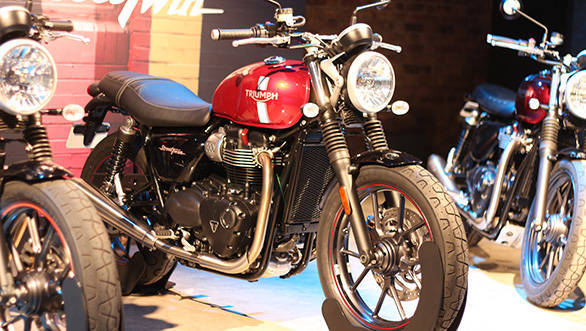
However, by splitting the engines into two displacement and three states of tune, Triumph are allowing a wider divergence between the Bonnevilles. In that sense, while you could argue that the previous trio of rungs on the Bonnie ladder were pretty close together, this time they're a lot farther away from each other. This, in my book, makes a lot of sense. I heard and had to participate in numerous debates from readers and friends who were simply trying to make up their minds about which Bonneville made the most sense. Well, all that is history because the difference in specification and performance, and the impact that this will have on the nature and feel of the Bonneville is certain to create stronger opinions and therefore, easier decisions.
A couple of months ago, British websites were abuzz with news on the new Street Triple line where a leaked spec sheet from a clinic revealed Triumph's alleged plan to split the Street Triple - currently a three model line up into four models. Now, the current models start with the unfortunate 85PS model which comes to India and was created for taxation benefits in two markets, Brazil and Japan. Above this is the base Street Triple with its 106PS motor and the top model, not sold in India, is the Street Triple R with its adjustable suspension and slightly sharper steering geometry. There is the new RX model which is a cosmetic variant of the R and hence, irrelevant for this article.
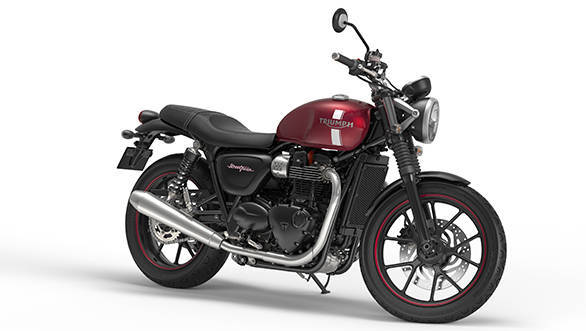 The base Bonneville is now called the Street Twin, it has alloy wheels just like the outgoing base model and it is the most compact, lightweight of the three
The base Bonneville is now called the Street Twin, it has alloy wheels just like the outgoing base model and it is the most compact, lightweight of the three
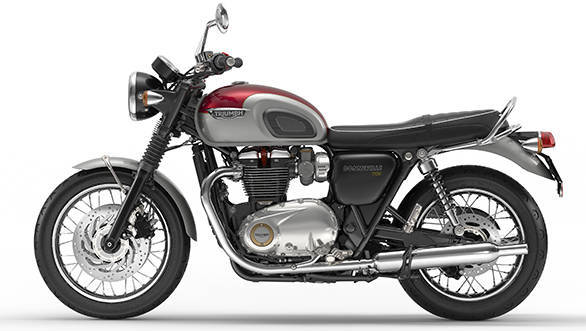 Above thE base model is the retro-styled and practicality oriented T120
Above thE base model is the retro-styled and practicality oriented T120
The four models rumoured to be in the new Street Triple range are vastly more different in intent, role and probably feel when Triumph official unveils them in one year's time. The base model will have the least powerful tune of the new 800cc three-cylinder engine. The R will sit above it just like it does now, adding 5PS more and adjustable suspension. Above that are the RT and RS which will have the full 125PS but be designed as a tourer and a sport-naked with the R's suspension. Like the Thruxton R, the top RS will have all of the top-flight bits like Brembo, Showa and Ohlins' best.
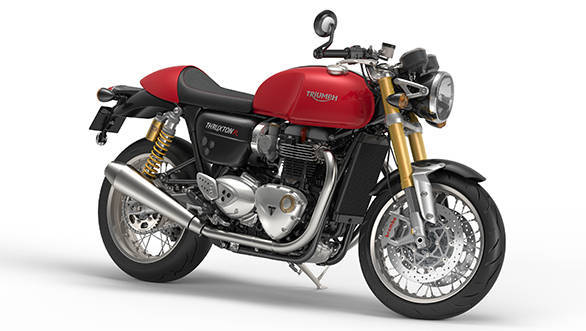 The Thruxton cafe racer remains the top dog of the range, creating a more focussed, sportier Bonneville variant
The Thruxton cafe racer remains the top dog of the range, creating a more focussed, sportier Bonneville variant
Can you see a pattern emerging? Triumph has also done exactly this with its Tiger 800 range, which is now six variants offering a specification that grows with price. The line is split into two models, the XR and the XC, where the former is road and touring oriented while the latter has that 21-inch front wheel signalling soft-roading and continent crossing intent. Unlike the Bonnie or the 2017 Street Triple, though, the Tigers don't have stratified engine tunes. Then again, the adventure tourer platform is about flexibility and has still not evolved to the point where small differences in engine tune accrue to product differentiation. At least not as easily as spec differences like alloy or spoke wheels and their sizes, factory luggage or not, cruise control etc mark adequate positioning layers with minimal overlap.
What this implies is that Triumph's next few years are full of activity as it opens up the range of choices within its traditionally strong product lines. There is clearly the opportunity to similarly diversify the brutal Speed Triple which currently is a hard-nosed power naked. A lighter, more electronic-ed motorcycle can easily be diversified into a hardcore sporty-naked on the lines of the KTM Super Duke, while a gentler touring model can easily coexist with a minor change of engine tune, throttle response and gearing. Spy shots of a minor update to the Speed are around - likely to happen this year - but a comprehensive new Speed Triple that switches to by-wire throttles, adds traction control and other electronics is, clearly, due, most likely as the 2017 model.
The challenge is hardest, perhaps, with the Daytona. Sportsbikes are pretty hardcore in role and definition and variant-ing it will be hard. Triumph already has two natural variants, a lower spec Daytona and the adjustable suspension-ed R model. What else is possible? If the displacement of the Daytona grows in the update - harder to do than other lines because the Daytona does go racing - then perhaps a sport-touring model is possible. This would require a stronger subframe to take care of luggage, taller gearing and perhaps a milder throttle response mode. We don't really have any sportsbike-based sport tourers right now but it's a juicy position that, for instance, the Honda VFR750 showed can find a strong commercial following (though Honda did dent their own success with the harsh cam timing switch on the 800 VTEC model).
What is harder to predict, of course, are the cruisers. Currently, they are the two lines, apart from the Tiger Explorer, that are still made out of Hinckley rather than Thailand. Diverging the cruiser platforms will be a more involved exercise though Harley-Davidson are masters of the art so it can clearly be done.
The Triumph strategy may not seem path-breaking in hindsight, but it is a pragmatic approach to the coming years of motorcycle demand. Motorcycle markets globally are focussing on the middle of the range more than the top of the line bikes and increasingly, the cornerstone of good sales is the ability to please more and more specific groups of customers. Which is where clear variant differentiation within product lines comes in. Triumph currently sells four lines of motorcycle in India with between two and four variants in each category in India. Expect each category to gain significantly more models if our assumptions hold. But the real kicker? What new categories will the company add?
Let us know what you think in the comments!
More on the 2016 Triumph Bonnevilles:
Triumph unveils all-new 2016 Bonneville range
The Triumph Bonneville Street Twin
Triumph Bonneville T120 and T120 Black
New Triumph Bonneville Thruxton And Thruxton R
.
Starts Rs 12,15,800
900cc
5-Speed
65.00
80.00
25.64 Kmpl
Starts Rs 7,45,000
900cc
5-Speed
65.00
80.00
25.64 Kmpl
Starts Rs 9,97,600
1200cc
6-Speed
80.00
105.00
22.22 Kmpl
Starts Rs 8,84,000
765cc
6-Speed
118.00
79.00
-NA-
Related Stories
Top Stories
Latest Videos
Most Popular
- Budget Sportbike Showdown: Kawasaki Ninja 500 vs Aprilia RS 457 vs Yamaha YZF-R3
- 2014 Triumph Daytona 675 vs 2024 Kawasaki ZX6R - A Decade of Evolution in Supersport Motorcycles
- Mumbai-Pune Expressway speed restrictions updated
- Nissan Magnite EZ-Shift review - is the AMT any good?
- Nitin Gadkari states that tax on Hybrids should be reduced to 12 percent in the coming future
